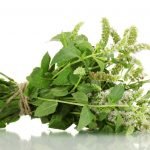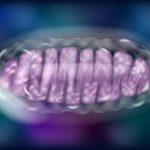Homeopathy: Correcting the Record
Naturopathic Perspective
Paul Theriault, BSc, ND, VNMI
I was most displeased this morning to have read a recent opinion piece against the teaching of homeopathy in naturopathic medical schools, by Nelson, Perchaluk, Logan, and Katzman.1 While I support open dialogue about all aspects of the profession, such dialogue must be based on factual information. Such inaccuracy as this article presents demands a response.
Article Rebuttals
Misunderstood Theory
Firstly, the authors possess a misunderstanding of the history and theoretical basis of homeopathy that is truly remarkable for naturopathic doctors, theoretically educated in the subject. They state that homeopathy “is a Westernized theoretic approach first proposed by Samuel Hahnemann (1755-1843); he and his followers maintained that ultradiluted substances (the sort which could cause specific symptoms if administered to a healthy individual) may correct the physiologic imbalance of an unwell individual.” Homeopathy, however is not based on the use of ultradiluted substances, as the authors assert. Rather, homeopathy is the application of the law of similars, as best articulated by Samuel Hahnemann, though not discovered by him. The law of similars is equally applied when one uses a tincture or an ultramolecular preparation. Many of the key uses of herbs from the empirical literature were explored in this manner, giving rise to many longstanding and key botanical treatments still used within naturopathic medicine. Juniperus communis, for example, is used extensively in crude tincture for issues such as urinary tract infections with discharge2 and a number of indications almost identical (if less precise) than its homeopathic usage. Other longstanding herbs have also been utilized successfully based on homeopathic indications and often-unacknowledged homeopathic provings.3 Examples include Aconitum napellus,4 Atropa belladonna,5 and even modern drugs such as nitroglycerine.
Nitroglycerine, due to its own extensive use in modern allopathy, deserves special mention as a medicine. Glonoinum, as nitroglycerine is named in the homeopathic materia medica, was first brought to the attention of medicine by Constantine Hering, one of the great homeopaths of the 19th century and one of Hahnemann’s most notable pupils. The initial results of the nitroglycerin proving were published in 1851 (translated to English in 1874), and symptoms produced by administration of the substance were incorporated in the materia medica and remain there to this day.6 As demonstrated in the wonderful historical analysis of Fye,7 this substance was later passed on to Field and Murrell, who, both influenced by homeopathic physicians, experienced an inadvertent proving by touching some of the substance. As a result nitroglycerin was introduced to allopathic medicine and gradually displaced the older drug of choice, amyl nitrate. To this day, this substance remains a mainstay of allopathic cardiology and is an extremely widespread application of the law of similars in crude doses.
Misunderstood History
The authors also allege that the law of similars was the product of Hahnemann’s experiments with ultradilute substances. This assertion is incorrect. The law of similars itself is a therapeutic principle that is present within the most ancient textual sources available. The Ebers Papyrus8 of 1500 BCE offers several prescriptions that directly relate to the law of similars, such as treating blindness with pig eyes, or headaches with fish heads.9
The most notable example of the law of similars, however, is found in the Hippocratic Corpus10:
The pains (complaints) will be removed by means of their opposite, each according to its own characteristics. Thus, heat corresponds to a hot constitution that has been made ill by the cold, and so on for the others. Another way of removing pain is the following: a disease develops by means of its like and is cured by means of the use of its like. Thus, what causes urinary tenesmus in health cures it in disease. Cough is caused and cured by means of the same agent, as in the case of urinary tenesmus. Another method: the fever causing the development of inflammation will be caused and cured by the same agent. At other times, it will be cured by the opposite of its cause.10
This text clearly points to the awareness of a law of similars, one among several therapeutic options at the disposal of physicians of the time. The concept is also mentioned in a number of other works of note, such as those of Paracelsus,9 as well as many other authors within the empirical tradition of medicine, as described by Coulter.11,12 An entire book on the study of the simile in medicine was published in 1936, by Boyd.13
Again, the law of similars is not an invention of Hahnemann; it is a practical observation that precedes him by at least 3000 years and was explicitly mentioned roughly 2000 years before in the Hippocratic Corpus. Hahnemann’s great innovation was the idea of the proving, the idea of administering medicines (initially in crude form) to the healthy as a means of determining, in advance, their medicinal properties.
Prior to Hahnemann, the only system of discovery of therapeutics was either based on theory, such as the systems of Cullen and Brown, or via trial and error. Hahnemann’s discovery, for the first time in medicine, opened up the possibility of using prior research on substances, and was based on a firm theoretical basis of application – one which, as we can observe in the case of nitroglycerine above, is still applied successfully today, if unconsciously. Hahnemann’s publishing of this principle in 179614 was a major milestone in medical research, and one that, to this day, has not been replicated or replaced by those outside of homeopathy.
Using this method, Hahnemann noticed that patients displayed a peculiar sensitivity to well-selected drugs. As such, they required far smaller doses than the immense ones commonly used in medical practice at the time. Hahnemann began reducing those doses of the drugs he used, according to the law of similars, and achieved far better and less toxic results (especially when using such common drugs of the time as mercury and belladonna). This phenomenon was described as early as 1801 in his essay “On the Power of Small Doses of Medicine in General and Belladonna in Particular.”15 Over the next several decades, Hahnemann observed increasing medicinal powers of remedies, increasing their strength with increasing degrees of trituration, dilution, and succussion.16
In short, the principles of dilution and succussion were a subsequent discovery of Hahnemann, predicated on the sensitivity of his patients to well-selected medicines. Clearly, the law of similars does not grow out of the experiments of Hahnemann, as incorrectly stated by Nelson at al.
Further historical inaccuracies can be identified later in Nelson et al’s article when the authors assert that Hahnemann disparaged providers who sought environmental causes of illness. In the seventh aphorism of the Organon,17 Hahnemann explicitly mentions cases of diseases in which there are occasioning or maintaining causes to be removed, providing examples, in his Footnote 7, of environmental influences, mechanical injuries, and poisonings. Nelson et al also assert that Hahnemann also disputed that any approach other than homeopathic was ever curative. This too is plainly contradicted by a close reading of the Organon. Aphorisms 286-291 of the sixth edition plainly describe the efficacy of measures such as magnetism, mesmerism, and of therapeutic baths (ie, early hydrotherapy), which was gaining popularity throughout Europe at the time but had not reached the peak of fame it would attain under Father Sebastian Kneipp after Hahnemann’s death in 1843. It is also asserted that the father of modern naturopathy, Dr Benedict Lust, did not incorporate homeopathy into his practice. This is correct; however, it is remiss to mention this while failing to mention that homeopathy was incorporated into the practices of other figures critical to the development of naturopathic medicine, such as Henry Lindlahr,18 John Bastyr19 and Otis G. Carroll.
Homeopathy Has Not Been Disproven
Nelson et al also assert that homeopathy has been disproven, both in terms of chemistry and clinical trials. This is not correct, and would be evident to anyone with even a cursory knowledge of the research on the subject.
Potentized testing of ultramolecular preparations has been performed since at least the 19th century and has consistently delivered positive results. I have documented these results in a blog post on my own website.20 The latest review paper on the subject, by Endler et al,21 provides an excellent synopsis of this research, which includes 128 in-vitro laboratory studies of ultramolecular preparations, of which 98 were replications. Of these replications, 70.4% obtained a similar result as that reported in the original publication, 20.4% obtained an inconclusive result, and 9.2% an opposite result. At the date of publication (2015), 5 models have been independently replicated. Perhaps the most notable of these is the upgraded basophil model.
The original basophil model, developed by Benviniste and published in Nature in 1988,22 was an experiment purportedly demonstrating that basophils could be made to degranulate with a homeopathic preparation of IgE. According to the late Dr Peter Fisher, this model, due to being based on normal cells, was replicable about 30% of the time. However, in recent years a newer model23 was developed that was based on pre-sensitizing basophils – ie, exposing them to homeopathic preparations of histamine – and afterward measuring the proportion of cells that degranulated. Dr Peter Fisher reported this method to be about 60% replicable. Indeed, this model was replicated in 3 independent labs in 2009, and in several more since, 1 being featured in this article.24
Homeopathy is Backed by Quality Studies
Nelson et al also assert that homeopathy has no good-quality, well-designed studies demonstrating results superior to placebo. The main source they quote for this is the recent report on homeopathy by the National Health and Medical Research Council (NHMRC).25 This report, while widely touted in the media for its findings, presents a number of oddities, which were compiled by the Homeopathy Research Institute (HRI).26
- NHMRC completed 2 reports: one in 2012, and a publicly released one in 2015.
- The existence of the first report was concealed from the public, only to be discovered through Freedom of Information (FOI) requests.
- NHMRC rejected the first report despite it being conducted by the author of NHMRC’s own research guidelines.
- FOI requests confirmed that Fred Mendelsohn, a member of the NHMRC’s oversight committee, confirmed the first report to be of high quality.
- NHMRC publicly reported that its 2015 assessment was based on “over 1800 studies”; in fact, it was based on only 176 studies.
- NHMRC used a criterion – which has never been validated, nor used before or since – of requiring a threshold of 150 participants in a study before considering it; of note, this figure is slightly above the number of 144 in one NHMRC trial of high methodological quality on childhood diarrhea.
- The completely unique rule for this review resulted in 171 of the 176 studies being discarded, leaving 5 negative studies to form the basis of their conclusion.
- Members of the NHMRC committee have misrepresented themselves in terms of reporting conflicts of interest to the committee, in that Peter Brooks (NHMRC Chair) was a member of an anti-homeopathy lobby group but failed to disclose this.
- The committee included not a single expert on homeopathy in its review, resulting in a number of misrepresentations and misunderstandings of homeopathic practice in the report, despite NHMRC guidelines requiring the presence of such an expert.*
Because of these oddities, the HRI initiated a complaint to the relevant government ombudsman, which was found to be of sufficient merit to warrant a taxpayer-funded investigation.27 HRI continues to update the public as to the progress of this investigation, which remains ongoing.†
Aside from relying on the questionable NHMRC report, Nelson et al claim that homeopathy is plagued by low-quality studies and offers no convincing argument for benefit beyond placebo. They cite several meta-analyses. One of these meta-analyses focuses on a single homeopathic indication (Oscillococcinum for prevention and treatment of influenza28), and another focuses on a specific set of conditions (acute respiratory tract infections in children29), as opposed to focusing on homeopathy as a whole. A third is the infamous Shang meta-analysis,30 which, like NHMRC’s report, was released to wide and uncritical media dissemination. This meta-analysis, however, also contained a number of irregularities, which have been detailed by HRI as follows:
- Despite advertising itself as being based on a comparison on 110 comparable trials of homeopathy and allopathic medicine, Shang’s analysis was based on 8 homeopathy trials and 6 allopathic trials.
- If the analysis had been conducted on all 21 higher-quality trials, the meta-analysis would have found the opposite result.
- If 1 out of the 8 studies was eliminated from the analysis, Shang would have found the opposite result.
- The 8 tested trials were all conducted using non-individualized homeopathy.
- Amazingly, the originally published study did not state which trials it used for comparison. After much question and media furor, Shang did eventually release this information, but only 4 months later, after the media had lost interest and after an effective response had become possible.
Although Nelson et al included some reviews on specific conditions, they omitted a recent systematic review on depression that revealed some limited positive evidence from 2 placebo-controlled, randomized clinical trials (RCTs) and an excellent risk:benefit ratio.31 The remaining 2 meta-analyses are part of a long-term series performed by Robert Mathie, beginning in 2014. This series consists of several meta-analyses of several portions of the homeopathic research literature. Specific analyses were conducted on RCTs of individualized homeopathy,32 RCTs on non-individualized homeopathy,33 and on non-placebo-controlled trials.34 Nelson et al cite the second and third meta-analyses – both of which could not reject the null hypothesis – yet fail to discuss Mathie’s first meta-analysis of individualized controlled RCTs – which yielded a positive result and which became more positive with higher qualities of evidence. The evidence, while certainly not unambiguously positive due to the higher-than-optimal level of bias in trials, points quite clearly to homeopathy having a greater-than-placebo level of efficacy. This is Mathie’s earliest and most famous meta-analysis. That Nelson et al would have awareness of the 2 negative meta-analyses while neglecting to even mention the 1 positive one, by chance, stretches credulity – even more so in their inclusion of several negative meta-analyses outside of this main series by Mathie without the inclusion of a recent positive one on depression. In other words, Nelson et al are omitting specific trials to support their opinion.
Conclusions
The latter portions of the article by Nelson et al detail the research on the placebo effect in medicine, and include the authors’ beliefs about the plausibility of homeopathy and the ethics of prescribing homeopathy when one believes it to be no more than a placebo.
As we can see, this opinion piece is founded on a misrepresentation of openly available data. The extent of this misrepresentation suggests that it is a deliberate attempt to mislead readers about the true state of research in homeopathy and to create an unfavorable opinion about this therapy within the profession.
Nelson et al, in their presentation of research literature, have uncritically accepted literature that is itself problematic and under government investigation. This could be regarded as simply a result of a superficial understanding of the research into homeopathy; however, their quoting of the 2 negative meta-analyses by Mathie, while omitting and not even mentioning the positive one – as well as completely ignoring a recent positive meta-analysis on homeopathy in depression while quoting several negative meta-analyses on specific conditions – does suggest a level of intent. Such an oversight cannot be due to chance, superficial knowledge, or mere incompetence; it can only be due to deliberate intention to deceive.
Homeopathy does have a basis in evidence, and is entirely sensible and understandable in light of the historical development of medicine in the western world. Criticism of the teaching of homeopathy in naturopathic colleges is certainly warranted. The basic principles of homeopathy are often poorly taught, particularly in schools where homeopathy was marginalized to the extent permitted by CNME guidelines, and many students often graduate without the ability to apply homeopathy to clinical practice. Indoctrinating students into believing – against the available laboratory and clinical evidence – that homeopathy is nothing but a placebo, and encouraging them to look “critically” at Hahnemann’s life and homeopathy’s history (as Nelson et al failed to do) is not the solution to this problem. Graduate training for physicians, such as that available from the recently reformed Homeopathic Academy of Naturopathic Physicians‡ and Naturopathic Medicine Institute§ is the solution, since it produces physicians skilled in the use of homeopathy, both in and of itself and in the context of whole-person naturopathic care.
The current homeopathic education of naturopathic physicians, when done well and not marginalized, either formally or informally, does provide an excellent platform from which those that desire this advanced graduate training can obtain it. The precedents for this approach within the profession are many, with skills such as prolotherapy, a number of advanced injection procedures, many IV procedures, ozone therapies, and several others that require advanced training after graduation, when they are within the scope of practice of a given jurisdiction. In British Columbia, where prescribing rights have increased, a graduate pharmacy course was developed by the British Columbia Naturopathic Association (BCNA), along with an exam, to allow for the controlled act of prescribing restricted substances from the naturopathic formulary, as determined by the College of Naturopathic Physicians of British Columbia. This same program, with some small alterations, was adopted by Ontario when they received prescription rights, and will likely form the basis of receiving these rights in Saskatchewan and Alberta, as well as any other prescribing jurisdictions in Canada, when such rights are granted according to the scope of practice of naturopathic doctors. The more basic pharmaceutical training received by NDs in naturopathic college is inadequate for prescribing many controlled substances safely. However, it does provide an excellent platform for post-graduate learning for those naturopathic doctors who wish to use pharmaceuticals within their practice.
I am not suggesting that homeopathy be treated as a restricted act, limited to naturopathic doctors with additional training and certifications. The extraordinarily safe profile of homeopathy should not prevent naturopathic doctors without detailed expertise in homeopathy from prescribing. But the precedents for graduate education and special training within the profession are clearly set. It is disingenuous of Nelson at al to point to the inability of naturopathic graduates to attain deep levels of expertise in a complex discipline like homeopathy while failing to appreciate this precedent. Graduate training is the key to the future of naturopathic medicine, but without a basic foundation in homeopathy, that graduate training would be considerably more difficult.
I am in favor of open discussion of all aspects of the profession. But such discussion must be founded on an accurate understanding, both of history and of the research available in the contemporary era. Deception and inaccuracy, such as is present in Nelson et al’s article, does an immense disservice to the profession and its ongoing discussions over education and its future. The authors of this article should be called to account for this deception, and the article should be retracted and rewritten on a factually correct basis.
*A presentation on this report by Rachel Roberts of the Homeopathic Research Institute can be found at: https://www.youtube.com/watch?v=dWKHFsRJhWk&t=63s
† The latest update from HRI’s Rachel Roberts can be found at: https://www.youtube.com/watch?v=oTNwT53qaGc
‡ Please see: https://hanp.net
- Please see: https://www.naturopathicmedicineinstitute.org/
References:
- Nelson DH, Perchaluk JM, Logan AC, Katzman MA. The Bell Tolls for Homeopathy: Time for Change in the Training and Practice of American Naturopathic Physicans. J Evid Based Integr Med. 2019;24:1-11. Available at: https://journals.sagepub.com/doi/full/10.1177/2515690X18823696. Accessed January 17, 2019.
- Felter HW, Lloyd JU. Juniperus.—Juniper. King’s American Dispensatory, 18th Ed, 3rd Rev; 1898. Henriette’s Herbal Homepage. Available at: https://www.henriettes-herb.com/eclectic/kings/juniperus.html. Accessed January 17, 2019.
- Coulter HL. Homeopathic influences in nineteenth-century allopathic therapeutics: A historical and philosophical study. Fairfax, VA: American Institute of Homeopathy; 1973.
- Felter HW, Lloyd JU. Aconitina.—Aconitine. King’s American Dispensatory, 18th Ed, 3rd Rev; 1898. Henriette’s Herbal Homepage. Available at: https://www.henriettes-herb.com/eclectic/kings/aconitum_aconitine.html. Accessed January 17, 2019.
- Felter HW, Lloyd JU. Belladonna. King’s American Dispensatory, 18th Ed, 3rd Rev; 1898. Henriette’s Herbal Homepage. Available at: https://www.henriettes-herb.com/eclectic/kings/atropa.html. Accessed January 17, 2019.
- Hering C. Glonoine. In: The Guiding Symptoms of Our Materia Medica. Vol V. Philadelphia, PA: Globe Printing House; 1887: 420. Available at: https://archive.org/details/guidingsymptomso00heri5/page/420. Accessed January 17, 2019.
- Fye WB. Nitroglycerine: a homeopathic remedy. Circulation. 1986;73(1):21-29. Available at: https://www.ahajournals.org/doi/pdf/10.1161/01.CIR.73.1.21. Accessed January 17, 2019.
- Ebbell B, trans. The Papyrus Ebers: The Greatest Egyptian Medical Document. Copenhagen, Denmark: Levin & Munksgaard; 1937. Available at: https://web.archive.org/web/20090312052919/http://www.macalester.edu/~cuffel/ebers.htm. Accessed January 17, 2019.
- Bellavite P, Conforti A, Piasere V, Ortolani R. Immunology and homeopathy 1. Historical background. Evid Based Compliment Alternat Med. 2005;2(4):441-452.
- Littré Oeuvres Complètes d’Hippocrates, Volume I. Paris, France: J. B. Baillière; 1839. Cited in Boyd LJ (1936) and in Bellavite (2005).
- Coulter HL. Divided Legacy, Volume I. The Patterns Emerge, Hippocrates to Paracelsus.Washington DC: Center for Empirical Medicine; 1975.
- Coulter HL. Divided Legacy, Volume II. The Origins of Modern Western Medicine: J. B. Van Helmont to Claude Bernard. Berkeley, CA: North Atlantic Books; 1977.
- Boyd LJ. A Study of the Simile in Medicine.Philadelphia, PA: Boericke and Tafel; 1936.
- Hahnemann S. Essay on a New Principle for Ascertaining the Curative Powers of Drugs, with a few glances at those hitherto employed. In: Dudgeon RE, trans. The Lesser Writings of Samual Hahnemann. Uttar Pradesh, India: B Jain Publishing; 2013.
- Hahnemann S. On the Power of Small Doses of Medicine in General and Belladonna in Particular. In: Dudgeon RE ( trans). The Lesser Writings of Samual Hahnemann. Uttar Pradesh, India: B Jain Publishing; 2013.
- Hahnemann S. How can Small Doses of Such very Attenuated Medicine as Homeopathy Employs Still Possess Great Power? In: Dudgeon RE trans. The Lesser Writings of Samual Hahnemann. Uttar Pradesh, India: B Jain Publishing; 2013.
- Hahnemann O’Reilly S, Brewster W, eds. Organon of the Medical Art, 6th Ed. Palo Alto, CA: Birdcage Books; 1996.
- Lindlahr H. Practice of Natural Therapeutics, 5th Ed. Chicago, IL: Lindlahr Publishing; 1922 (original publication). Available at: https://soilandhealth.org/wp-content/uploads/GoodBooks/Practice%20of%20Natural%20Therapeutics.pdf. Accessed January 17, 2019.
- Grimes MJ. John Bastyr: Philosophy and Practice. San Francisco, CA: Alethea Book Company; 2005.
- Theriault P. Homeopathy has In Vitro evidence. [Blog post] July 11, 2018. Available at: http://www.drpaultheriault.com/2018/07/11/homeopathy-has-in-vitro-evidence/. Accessed January 17, 2019.
- Endler PC, Bellavite P, Bonamin L, et al. Replications of fundamental research models in ultra high dilutions 1994 and 2015– update on a bibliometric study. Homeopathy. 2015;104(4):234-245.
- Davenas E, Beauvais F, Amara J, et al. Human basophil degranulation triggered by very dilute antiserum against IgE. Nature. 1988;333(6176):816-818.
- Sainte-Laudy J, Belon P. Inhibition of basophil activation by histamine: a sensitive and reproducible model of the biological activity of high dilutions. Homeopathy. 2009;98(4):186-197.
- Chirumbolo S, Brizzi M, Ortolani R, et al. Inhibition of CD203c membrane up regulation in human basophils by high dilutions of histamine: a controlled replication study. Inflamm Res. 2009;58(11):755-764.
- National Health and Medical Research Council. Homeopathy: Publication Data. NHMRC Web site. https://nhmrc.gov.au/about-us/publications/homeopathy. Accessed January 17, 2019.
- Homeopathy Research Institute. The Australian Report. HRI Web site. https://www.hri-research.org/resources/homeopathy-the-debate/the-australian-report-on-homeopathy/. Accessed January 17, 2019.
- Homeopathy Research Institute. Executive Summary: Complaint to the Commonwealth Ombudsman regarding the National Health and Medical Research Council (NHMRC) assessment of homeopathy, 2010- 2015. HRI Web site. https://www.hri-research.org/wp-content/uploads/2017/04/Executive-Summary-to-Ombudsman-Complaint-re-NHMRC-Homeopathy-Review-FINAL.pdf. Accessed January 17th 2019.
- Mathie RT, Frye J, Fisher P. Homeopathic Oscillococcinum for preventing and treating influenza and influenza-like illness. Cochrane Database Syst Rev. 2015;1: CD001957. Available at: https://www.cochranelibrary.com/cdsr/doi/10.1002/14651858.CD001957.pub6/full. Accessed January 17, 2019.
- Hawke K, van Driel ML, Buffington BJ, et al. Homeopathic medicinal products for preventing and treating acute respiratory tract infections in children. Cochrane Database Syst Rev. 2018;9: CD005974. Available at: https://www.cochranelibrary.com/cdsr/doi/10.1002/14651858.CD005974.pub5/full. Accessed January 17, 2019.
- Homeopathy Research Institute. The Lancet paper by Shang et al. HRI Web site. https://www.hri-research.org/resources/homeopathy-the-debate/the-lancet-paper-by-shang-et-al/. Accessed January 17, 2019.
- Viksveen P, Fibert P, Relton C. Homeopathy in the treatment of depression: a systematic review. Eur J Integr Med. 2018;22:22-36. Available at: https://www.sciencedirect.com/science/article/pii/S1876382018304451. Accessed January 17, 2019.
- Mathie RT, Lloyd SM, Legg LA, et al. Randomised placebo-controlled trials of individualised homeopathic treatment: systematic review and meta-analysis. Syst Rev. 2014;3:142. Available at: https://systematicreviewsjournal.biomedcentral.com/articles/10.1186/2046-4053-3-142. Accessed January 17, 2019.
- Mathie RT, Ramparsad M, Legg LA, et al. Randomised, double-blind, placebo-controlled trials of non-individualised homeopathic treatment: systematic review at meta-analysis. Syst Rev. 2017;(6)1:63. Available at: https://systematicreviewsjournal.biomedcentral.com/articles/10.1186/s13643-017-0445-3.
- Mathie RT, Ulbrich-Zürni S, Viksveen P, et al. Systematic Review and Meta-Analysis of Randomised, Other-than-Placebo Controlled, Trials of Individualised Homeopathic Treatment. Homeopathy. 2018;107(4):229-243.
 Paul Theriault, BSc, ND, VNMI, graduated from CCNM in 2010. He maintains a practice in Calgary that is dedicated to treating chronic infections, elimination of blockages to healing, digestive problems, and autism using homeopathy, constitutional hydrotherapy, drainage, and auricular acupuncture. Dr Theriault is the author of A New Era: Homeopathy and the Human Spirit (a book about triturated remedies in homeopathy) and The Table of Animals (a series of books systematizing the animal remedies in homeopathy). He is one of the first to complete an advanced training in Vitalistic Naturopathic Medicine from the Naturopathic Medicine Institute and receive the VNMI designation, and is currently completing his DHANP from the Homeopathic Academy of Naturopathic Physicians. Website: drpaultheriault.com.
Paul Theriault, BSc, ND, VNMI, graduated from CCNM in 2010. He maintains a practice in Calgary that is dedicated to treating chronic infections, elimination of blockages to healing, digestive problems, and autism using homeopathy, constitutional hydrotherapy, drainage, and auricular acupuncture. Dr Theriault is the author of A New Era: Homeopathy and the Human Spirit (a book about triturated remedies in homeopathy) and The Table of Animals (a series of books systematizing the animal remedies in homeopathy). He is one of the first to complete an advanced training in Vitalistic Naturopathic Medicine from the Naturopathic Medicine Institute and receive the VNMI designation, and is currently completing his DHANP from the Homeopathic Academy of Naturopathic Physicians. Website: drpaultheriault.com.









